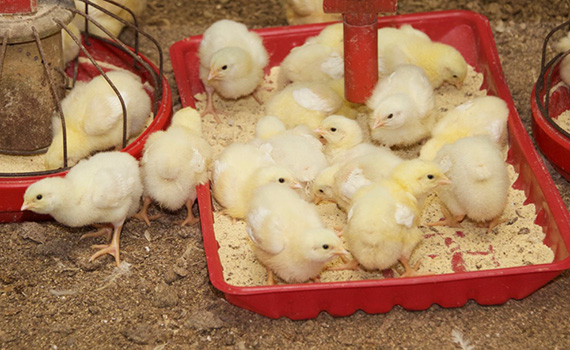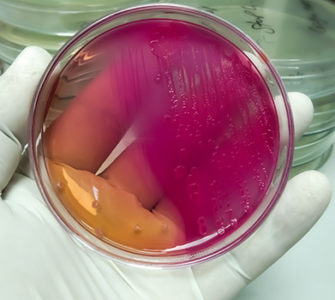Early feeding, housing may affect broiler response to immune challenges
Early feeding after hatch and housing type can affect the response of broilers to immune challenges later in life, indicates a study from the Netherlands.1
In the study, broiler chicks received feed and water either immediately after hatch or after a 72-hour delay, and were reared either on the floor or in a cage system.
At 4 weeks of age, researchers challenged the chicks intratracheally with Escherichia coli lipopolysaccharide/Human Serum Albumin (HUSA) — a non-infectious lung challenge — or a placebo. They then measured antibody titers up to 14 days after the challenge.
Chicks with delayed access to feed and water and that were housed on the floor had the highest antibody titers against HUSA, and showed the strongest sickness response and poorest performance in response to the challenge. The findings indicate that chicks with delayed access to feed might be more sensitive to an environment with higher antigenic pressure, reported investigators from Wageningen University.
Early feeding and housing should be taken into account when striving for a balance between disease resistance and performance in poultry, the investigators concluded in their study, published in the September 2015 issue of Poultry Science.
1 Simon K, et al. Early feeding and early life housing conditions influence the response towards a noninfectious lung challenge in broilers. Poult Sci. 2015 Sep;94(9):2041-8.
Posted on January 25, 2017

















